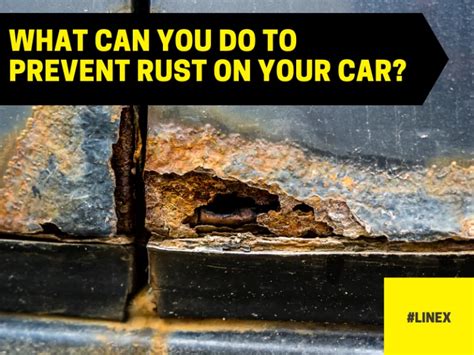The Ultimate Guide to Galvanic Corrosion Prevention for Cars
Galvanic corrosion, also known as dissimilar metal corrosion, is a silent threat to your car's longevity. It occurs when two different metals come into contact in the presence of an electrolyte, like water or road salt. This electrochemical reaction leads to the deterioration of the less noble metal, potentially causing significant damage to your vehicle's body, electrical systems, and more. Understanding galvanic corrosion and implementing preventative measures is crucial for maintaining your car's structural integrity and value. This ultimate guide will equip you with the knowledge and strategies to effectively combat this insidious form of corrosion.
What is Galvanic Corrosion in Cars?
Galvanic corrosion happens when two dissimilar metals, such as steel and aluminum, are in contact and exposed to moisture. The more active metal (the anode) loses electrons and corrodes, while the less active metal (the cathode) gains electrons and remains relatively unaffected. In a car, this often involves steel body panels and aluminum parts like wheels, bumpers, or engine components. Road salt, especially prevalent in winter months, accelerates the process by acting as a highly conductive electrolyte. This accelerates the corrosion process, leading to rust, pitting, and ultimately, structural weakening.
Common Sites of Galvanic Corrosion in Cars
Several areas in your car are particularly susceptible to galvanic corrosion:
- Body panels and aluminum parts: The contact points between steel body panels and aluminum components like bumpers or trim pieces are prime locations for this type of corrosion.
- Exhaust system: The exhaust system, with its various metal components (steel, aluminum, stainless steel), often experiences galvanic corrosion, especially where different metals join.
- Electrical connections: Dissimilar metals in electrical wiring and connectors can also lead to corrosion, affecting performance and potentially causing electrical failures.
- Undercarriage: The undercarriage is constantly exposed to road salt, water, and dirt, making it a high-risk area for galvanic corrosion.
How to Prevent Galvanic Corrosion in Your Car
Preventing galvanic corrosion requires a multifaceted approach:
1. Proper Materials Selection (During Manufacturing)
At the manufacturing level, carmakers employ various techniques to minimize galvanic corrosion. These include:
- Using compatible metals: Selecting metals with similar electrochemical potentials reduces the driving force for corrosion.
- Protective coatings: Applying coatings like paint, zinc plating, or anodizing to exposed metal surfaces creates a barrier against moisture and electrolytes.
- Insulation: Placing insulating materials between dissimilar metals prevents direct contact and electron flow.
2. Regular Maintenance and Cleaning
You can significantly reduce the risk of galvanic corrosion through diligent maintenance:
- Frequent washing: Washing your car regularly removes road salt, dirt, and other contaminants that act as electrolytes. Pay particular attention to the undercarriage.
- Waxing and sealing: Applying wax or sealant creates a protective barrier that prevents moisture from reaching the metal surfaces.
- Undercoating: An undercoating application provides an extra layer of protection for the undercarriage, shielding it from the elements and preventing corrosion.
3. Repairing Damaged Areas Promptly
Addressing any damage to the paint or protective coatings promptly is essential. Rust and corrosion spread quickly, so prompt repair prevents further damage.
4. Using Corrosion Inhibitors
Corrosion inhibitors are chemical compounds that slow down or prevent corrosion. These can be added to cleaning solutions or applied as a protective coating.
What Causes Galvanic Corrosion in Cars? (PAA Question)
Galvanic corrosion occurs when two dissimilar metals are in electrical contact in the presence of an electrolyte (like water or salt). The more active metal (the anode) corrodes as it loses electrons to the less active metal (the cathode). The electrolyte facilitates the flow of electrons, completing the electrical circuit and driving the corrosion reaction.
How to Identify Galvanic Corrosion? (PAA Question)
Look for signs like pitting, rust, discoloration, or bubbling around the contact points of dissimilar metals. These are strong indicators of galvanic corrosion. Pay close attention to areas where different metals meet, such as where aluminum bumpers meet steel body panels.
What Metals Are Most Susceptible to Galvanic Corrosion in Cars? (PAA Question)
Steel is a common metal in car bodies and is highly susceptible to corrosion, especially when in contact with less active metals like aluminum or stainless steel. Aluminum, while corrosion-resistant, can still be affected in galvanic couples.
Can I Prevent Galvanic Corrosion Myself? (PAA Question)
Yes, you can take several steps to minimize galvanic corrosion. Regular washing, waxing, undercoating, and promptly addressing any paint damage will significantly reduce the risk. Using corrosion inhibitors can also help.
Conclusion
Galvanic corrosion is a serious issue that can significantly impact the lifespan and value of your car. By understanding the mechanisms involved and implementing the preventative measures outlined above, you can proactively protect your vehicle from this insidious form of corrosion and extend its life. Regular maintenance and vigilance are key to ensuring your car stays in top condition for years to come. Remember, early detection and prompt action are critical to minimizing damage and preventing costly repairs.

